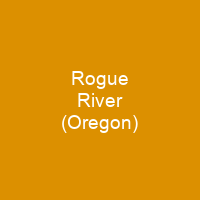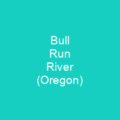The Rogue River: A Natural Wonder in Southwest Oregon
Imagine a river that weaves through time, carrying stories of ancient civilizations and modern adventures. The Rogue River, flowing approximately 215 miles from the Cascade Range to the Pacific Ocean, is more than just a waterway—it’s a living history lesson in Oregon’s natural beauty and human interaction.
Geography and History
The Rogue River begins at Boundary Springs near Crater Lake National Park. It flows westward through the Rogue River-Siskiyou National Forest, passing through geologically young areas like the High Cascades and Klamath Mountains. This river has been a lifeline for Native Americans for over 8,500 years, with conflicts arising between them and European-American settlers in the mid-19th century.
Wild and Scenic Designation
The Rogue River is one of only three rivers starting east of the Cascade Range to reach the Pacific Ocean. It was designated as a Wild and Scenic River in 1968, with an additional 40 miles added in 1988. About 58 percent of its total length—124 miles—is protected under this designation.
Water Quality and Management
The Rogue River is relatively clean, ranking in the top 97 on the Oregon Water Quality Index. However, it has faced challenges due to dam building and removal. The William L. Jess Dam blocks the river 157 miles from its mouth, while several dams were removed or destroyed earlier in the 20th century.
Historical Mail Boats
In the early days of settlement, mail boats operated along the Rogue River, connecting communities and delivering essential supplies. These boats evolved over time, with jetboats eventually replacing propeller-driven ones by the 1960s. Today, jet boats still serve as both a means of transportation and an exciting excursion craft.
Fisheries and Wildlife
The Rogue River is known for its salmon runs, which were once a reliable food source for Native Americans. Commercial fishing operations flourished in the 1850s but declined due to overfishing. Today, the Oregon Department of Fish and Wildlife operates hatcheries like the Cole M. Rivers Hatchery near Lost Creek Lake.
Recreational Activities
The river offers a variety of recreational activities, including whitewater rafting, hiking, and sport fishing. The Wild section of the lower Rogue River is renowned for its challenging rapids, making it one of the best-known whitewater runs in the United States.
Environmental Concerns
The Rogue River watershed faces environmental challenges such as pollution from agricultural runoff and urban development. Compliance with the Clean Water Act helps address these issues, but ongoing efforts are necessary to protect this vital ecosystem.
Biodiversity
The Klamath-Siskiyou region, where the Rogue River flows, is considered one of the four most diverse temperate coniferous forests in the world. Riparian zones along the river support a wide variety of plant and animal species, including native fish like Coho salmon and steelhead.

The Rogue River is a testament to the resilience of nature and human ingenuity. From its ancient origins to modern-day adventures, this river continues to captivate and inspire those who explore its banks.
Conclusion: The Rogue River stands as a symbol of Oregon’s rich natural heritage and ongoing environmental stewardship. Whether you’re an avid angler, a history buff, or simply someone seeking adventure, the Rogue River offers something for everyone. Its story is one of adaptation, resilience, and the enduring spirit of exploration.
You want to know more about Rogue River (Oregon)?
This page is based on the article Rogue River (Oregon) published in Wikipedia (retrieved on December 10, 2024) and was automatically summarized using artificial intelligence.







